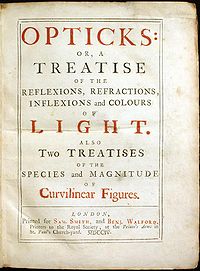
Photo from wikipedia
ABSTRACT This article addresses a clarification study on the thermally nonlinear Fourier/ non-Fourier dynamic coupled (generalized) thermoelasticity. Based on the Maxwell-Cattaneo’s heat conduction law and the infinitesimal theory of thermoelasticity,… Click to show full abstract
ABSTRACT This article addresses a clarification study on the thermally nonlinear Fourier/ non-Fourier dynamic coupled (generalized) thermoelasticity. Based on the Maxwell-Cattaneo’s heat conduction law and the infinitesimal theory of thermoelasticity, governing equations for the thermally nonlinear small deformation type of generalized thermoelasticity are derived. The Bubnov–Galerkin scheme is implemented for spatial discretization. The spatially discretized equations are directly discretized in time domain using the fully damped Newmark method. The Newton–Raphson procedure is used to linearize the finite element equations. The layers are exposed to a thermal shock, so that the displacement, temperature, and stress waves propagate in layers. The effects of the time evolution, thermoelastic coupling, and thermal relaxation time on the response of the layers are investigated. Results reveal the significance of the thermally nonlinear analysis of generalized thermoelasticity for the conditions where large temperature elevations exist.
Journal Title: Journal of Thermal Stresses
Year Published: 2017
Link to full text (if available)
Share on Social Media: Sign Up to like & get
recommendations!